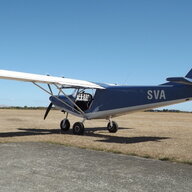Here is how it went for our group of about 20 in the chamber:
At 18,000' we all took our masks off and it was like being at a party where everyone has had a few beers (or something) and are thoroughly enjoying themselves. We were asked a few questions about the lecture we had had beforehand, nobody could much remember the details of that, but this was generally hilarious.
Masks on and we went to 25'000, masks then off in pairs while everyone else watched.
We had scratch pads and were to subtract 7 from 301, 7 from the result and so on. After about a minute you can't do it...but that's fine, you're happy to keep trying.
Every minute or so the instructor holds a finger up in front of you, and you are to repeatedly to touch his finger, then your nose. After about a minute this becomes very difficult: you can touch his finger with a lot of weaving around, but you can't seem to accurately touch your nose, the best you can do is somewhere on your face.
You are required to hold your arms out straight in front of you, and you can't maintain that: they go out, but then fall down and you repeatedly jerk them back up, they fall again: hypoxic flaps.
It's all fine, but after about 2 mins (or hypoxic flaps, if sooner) you are told to put your mask back on. Whereupon your colour vision comes back, though you'd not noticed you had lost it.
We had folk wouldn't put their masks back on, so far as they were concerned they were doing just fine despite being unable to do any of that above.
And we had one outstanding example of target fixation: with the nose touching exercise, one of the group wouldn't let the instructor put his hand back down. Each time he tried to, she grabbed it and put it back up in front of her so she could continue trying to do it. Got very indignant about it too.
Recovery is usually surprisingly rapid too once you get the mask back on. Though apparently some continue into hypoxia, and we had one of those needed extra oxygen for a bit.
And we had one who apparently functioned fine at 25,000ft, and a smoker at that.








